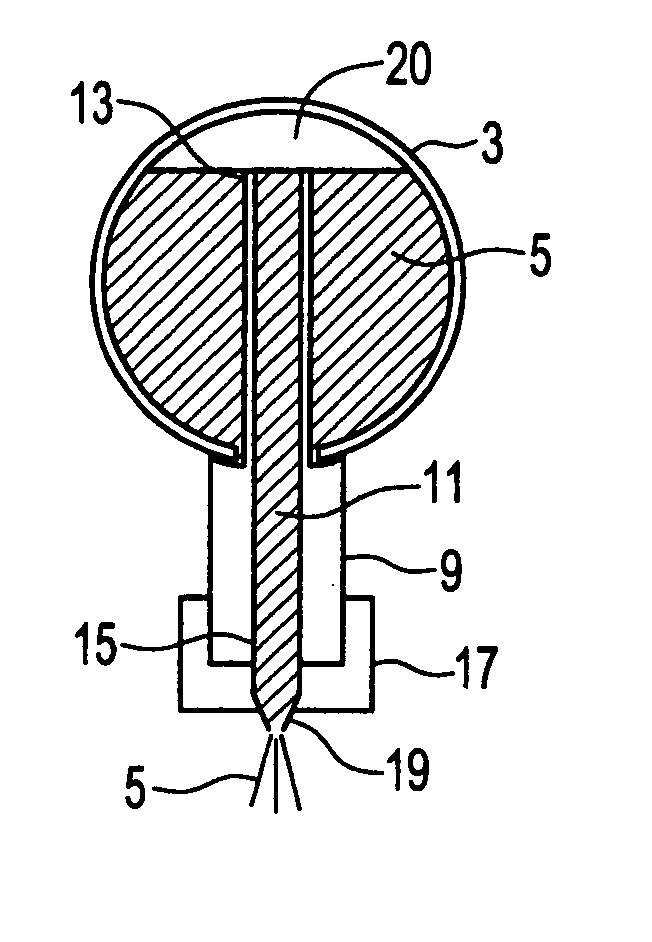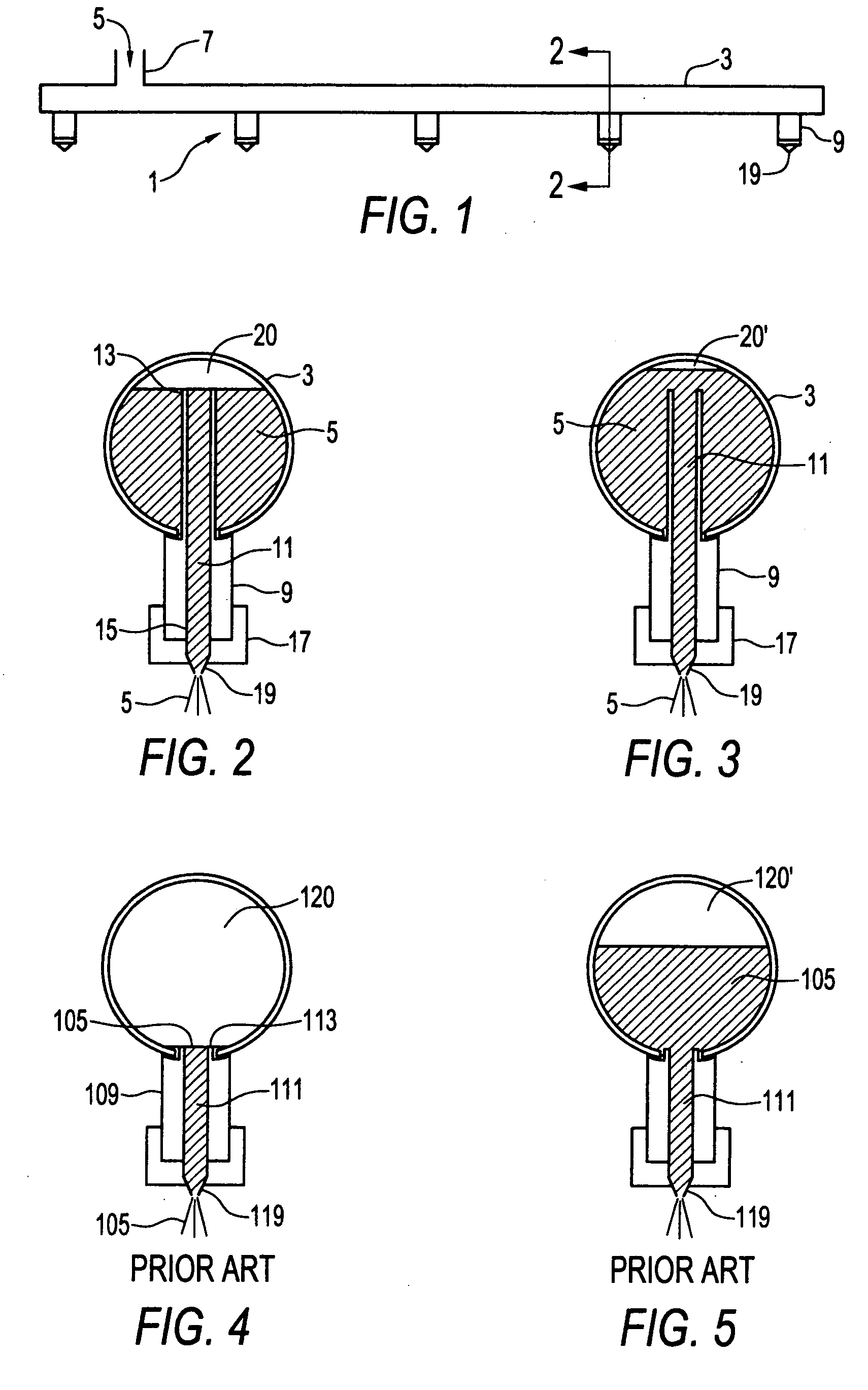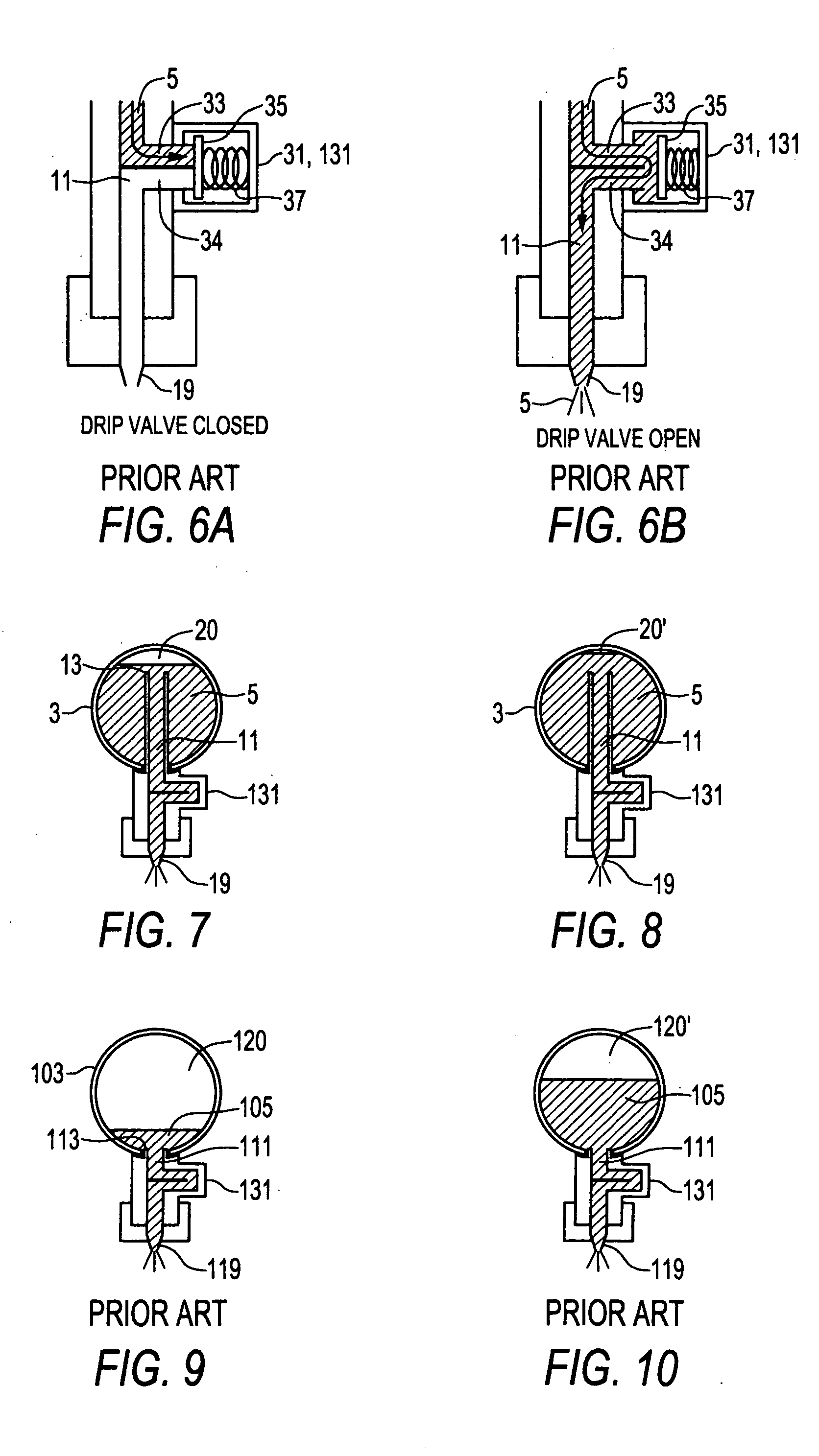Method and apparatus for reducing drip from spray nozzles
a technology of spray nozzles and spray nozzles, which is applied in the field of methods and, can solve the problems of significantly higher cost of incorporating and maintaining such a system than the conventional boom valve, and achieve the effects of reducing time, reducing pressure of trapped air, and reducing volume of compressed air
- Summary
- Abstract
- Description
- Claims
- Application Information
AI Technical Summary
Benefits of technology
Problems solved by technology
Method used
Image
Examples
Embodiment Construction
[0031]FIGS. 1-3 schematically illustrate a spraying apparatus 1 of the invention. The apparatus 1 comprises a generally horizontally oriented supply conduit 3 carrying pressurized liquid 5 that is pumped into the supply conduit through the inlet 7 from a pump or like pressurized liquid source. A nozzle body 9 is attached to the supply conduit 3 over an aperture through the supply conduit 3 by clamps, by screwing into a threaded aperture in the supply conduit 3, or like means as are well known in the art such that the nozzle body 9 is in sealed communication with the supply conduit 3.
[0032] A nozzle conduit 11 extends through the nozzle body 9. The nozzle conduit 9 has an input end 13 located inside the supply conduit 3 in an upper portion of the supply conduit 3 as illustrated in FIGS. 2 and 3, and an output end 15 at a lower end 17 of the nozzle body 9. A nozzle 19 is secured in a lower end 17 of the nozzle body 9 at the output end 15 of the nozzle conduit 11 such that pressurized...
PUM
 Login to View More
Login to View More Abstract
Description
Claims
Application Information
 Login to View More
Login to View More - R&D
- Intellectual Property
- Life Sciences
- Materials
- Tech Scout
- Unparalleled Data Quality
- Higher Quality Content
- 60% Fewer Hallucinations
Browse by: Latest US Patents, China's latest patents, Technical Efficacy Thesaurus, Application Domain, Technology Topic, Popular Technical Reports.
© 2025 PatSnap. All rights reserved.Legal|Privacy policy|Modern Slavery Act Transparency Statement|Sitemap|About US| Contact US: help@patsnap.com



